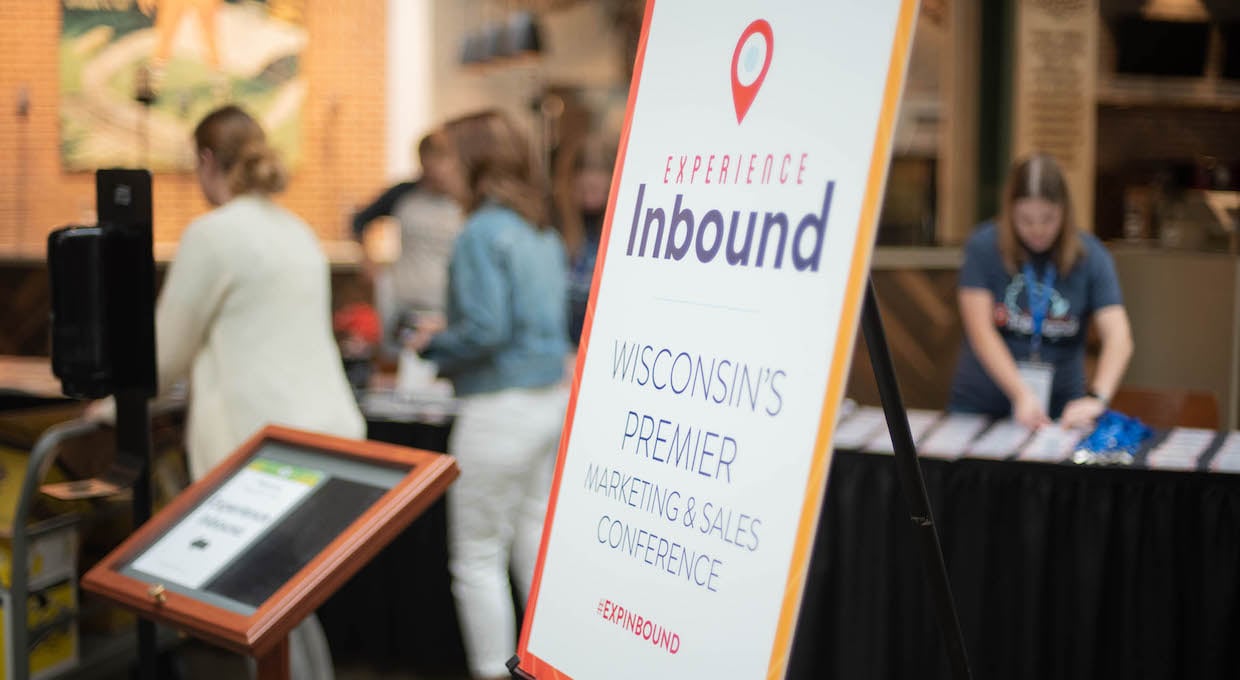What is Audience Segmentation & How Can It Enhance Your Inbound Marketing Efforts?
Written by

“If you build it, they will come.”
That may work in the movies (thank you, Field of Dreams), but to get the attention of today’s online buyer, marketers need to wisely attract and engage them. In short, your content needs to get in front of the right people at the right time, or you risk striking out.
No matter how large or small your audience, today’s B2B buyers want a personalized buying experience, and they demand information that’s tailored to their specific needs. Only by meeting those needs do you have a chance at winning their business and loyalty.
For inbound marketers, this requires having a strong understanding of your different buyer personas and their buyer journeys, so you can offer the most helpful, relevant content that answers their current questions and solves their most pressing challenges.
A great place to start is with an old-fashioned definition:
“What is Audience Segmentation?”
It's the process of breaking larger audiences into smaller groups based on known attributes, behaviors, traits, mindsets, income, and similar demographics or interests.
Audience segmentation is key for inbound marketing success because it …
- focuses targeting
- uncovers opportunities
- warms leads to accelerate the sales cycle
- drives a customer-first strategy
- makes it easier to keep customers happy and turn them into loyal promoters of your brand
- inspires stronger messages and content based on the similarities of each segment
Importance of Audience Segmentation to Inbound Marketing
Although audience segmentation has been a key part of marketers’ gameplans for decades, as more buyers conduct research and make purchase decisions online, it’s become even more pivotal to marketing’s overall success.
From precisely targeted ad campaigns to personalized web pages, it’s now easier than ever to reach a specific persona, or even individual, online. Yet, the competition for buyers’ attention today is fierce, so knowing exactly where to find your prospects and how to approach them is crucial.
Modern inbound marketing software has helped make audience data more granular, so marketers have an abundance of information at their fingertips every time someone visits their site or downloads a piece of content. The company that uses that information to customize a persona’s buying experience has the advantage over companies trying to appease all personas simultaneously.
Modern Audience Segmentation Strategies
Okay, segmenting your audience into different groups is great. But, what approach should you use to get the results you’re looking for?
Sometimes segmenting your audience based on demographics (location, age, company, job title) is best. Other times, it’s more complicated. Segmenting your audience based on similar interests, buyer’s journey stages, or account based marketing (ABM) plans is more effective.
Here are a few suggestions and tips.
Demographic Segmentation
This is usually pretty straightforward, and it’s the most common method of audience segmentation. Yet, just because something is less complicated doesn’t mean it can’t be incredibly effective when implemented properly.
Here’s an example that explains how a location-based segmentation strategy during a particular time of year drives sales: a construction equipment company looking to maximize sales in the Midwest focuses on spring and summer, as their buyers’ operations slow in fall and winter. Buyers in southern areas, however, may be in demand year-round.
Buyer PERSONA & BUYER Journey Stage
Segmenting your audience by their buyer persona characteristics and their stage in the buyer’s journey is the second most common form of audience segmentation, with three levels of content relating to a lead’s buying journey.
Prospects at the attraction/awareness stage of the buyer’s journey (or top of the sales funnel) typically have similar low-level questions and pain points. Prospects in the education/ conversion stage (middle of the funnel) are looking for more advanced content that answers specific questions. The bottom of the funnel is where prospects are ready to make a purchase decision. The real magic comes when you create content for each stage of the buyer's journey for each of your buyer personas, so it's highly relevant to their needs at that point in time.
RELATED RESOURCE:
Our Content Creation Guide has checklists and templates for each stage in the buyer’s journey. Get Your Copy Now!
Behavioral Segmentation
This is based on segmenting an audience by their decision-making behaviors. You tailor messaging to reach customers at the moment they’re more likely to convert.
For example, an industrial manufacturer’s buyers fall under one of two categories: those who make regular, smaller purchases to replenish inventory, and those who make a major purchase far less frequently. Each segment has different needs and is likely buying for different reasons, so you don't want to send marketing content that isn’t relevant to their needs (because they'll ignore it and it makes your company look out of touch).
Previous Interactions
It’s a shame that this segmentation is often overlooked. When you use an audience’s previous interactions to drive messaging (and timing), you’re creating very effective efforts.
Example: highly active and frequently engaged prospects should hear from you in different ways than those who haven’t connected or responded in a long time. Similarly, segment your audiences based on where their interactions occurred. Some people lean on social media, while some are comfortable email readers.
Device Type
Hand-in-hand with segmenting by previous interactions, segmenting your audience by device type is crucial for maximizing engagement with your content. People use desktop and mobile devices differently.
As an example: for mobile contacts (after ensuring that your website, emails, and video are optimized for mobile), optimize some calls-to-action in your offerings to promote using their phone to contact you, rather than downloading a content offer.
RELATED RESOURCES:
Our Video Library has 30+ inbound marketing learning options. Start Watching Now!
Audience Segmentation Tips
Regardless of what segmentation strategy you use, it’s important to keep these four tips in mind:
- Don’t Overdo It. Breaking your audience down into smaller segments can get addicting. It’s exciting to keep creating smaller, more specific subsets. Unless your goal is to create a personalized buying experience for each individual (which is possible), keeping your segments somewhat broad helps create more meaningful observations.
An example of good segmentation: Customers with 2+ purchases, same product, approaching renewal date. This is overdoing it: Customers who only buy in January, pay with Visa, purchase 3+ products, age 50-65, and are located within 100 miles of headquarters. - Continuously Test and Improve. The data available to today’s inbound marketers can help you better segment and target your buyer personas. That said, the best way to figure out the best segmentation strategies is to try different combinations and analyze their successes and failures. If a particular campaign does well, remember how the audience was segmented and how you optimized your message. Also, take note of what doesn’t work so you can avoid the same mistake in the future.
- Set Clear Goals. Analyzing and testing different segmentation strategies helps you better understand your audience. Yet, you can’t effectively tell what’s working (and what isn’t) unless you set clear goals for segmentation. What kind of improvements are you looking to see from a new test segment? Make sure you review your business’ overall goals to ensure your segmentation goals are aligned.
- Go Beyond Email Segmentation. Though email lists are the easiest contact lists to segment and test, your audience segmentation strategy should go further. Dedicate entire webpages to different personas and segments, as well as blog articles, advanced content offers, social media posts, videos, and more.
When you take time to understand the unique traits of your audience and tailor your marketing approach to meet their needs, you’re turning your inbound efforts into your own Field of Dreams, maximizing your reach and results.
Here's another resource for improving your inbound marketing efforts. It’s a guide and library of additional resources that will help you make the most of inbound marketing. Best of luck, and have fun!
Subscribe To Our Blog
Information. Insights. Ideas. Get notified every time a new Weidert Group blog article is published – subscribe now!
You May Also Like...

Artificial Intelligence
AI Agents Are Here—How Smart Businesses Are Using Them Now

Inbound Marketing
Podcasting Playbook: What We Learned After 100 Days of Running a B2B Podcast

Weidert Group News
Experience Inbound 2025: What’s Working Now (and What’s Next)
Accelerate Your Growth with
Weidert Group
If you’re ready to explore a partnership, request a personalized consultation with our team.

